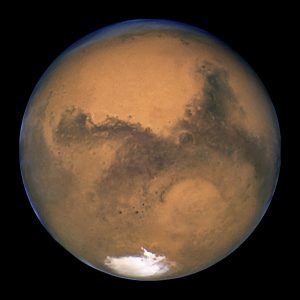 Scientists have reported that NASA’s Curiosity rover has found methane and other organic compounds that serve as the foundations of life on Mars. Scientists from NASA and other research agencies from around the world published their findings in two stories in the journal Science. NASA also held a press conference to share the latest findings from the data collected by the Mars rover.
Scientists have reported that NASA’s Curiosity rover has found methane and other organic compounds that serve as the foundations of life on Mars. Scientists from NASA and other research agencies from around the world published their findings in two stories in the journal Science. NASA also held a press conference to share the latest findings from the data collected by the Mars rover.
The story is big news because this is the first time scientists have revealed concrete evidence of the existence of organic compounds on Mars. The rover found large amounts of organic molecules in drilling samples of 3.5 billion-year-old rock in the Gale Crater, an area on Mars believed to have once contained a large lake. Curiosity has also discovered sharp seasonal increases in methane gas in the Martian atmosphere.
There is a good reason to see methane as a potential signal of microbes on Mars. On Earth, methane is a sign of life, as most of the methane we have is produced by biology. However, researchers said it is too early to know if the methane on Mars is related to life. The gas can also be formed by geological processes.
To uncover what’s causing these seasonal surges of methane, NASA will need to launch new Mars missions more capable of searching for definitive signs of life. NASA’s Mars 2020 rover is custom-built for this purpose. The European Space Agency’s ExoMars rover has also been built with similar aims.
The Mars rover Curiosity first landed on the red planet in August of 2012. Its initial mission was to determine whether Mars had supported life in the past or might be able to support life in the future. In 2013, the rover found that liquid water and the chemical components behind life had once existed on Mars. It made another miraculous discovery at the beginning of 2018, when it was thought to have found evidence of bioturbation, the disturbance of sedimentary deposits by living organisms.
